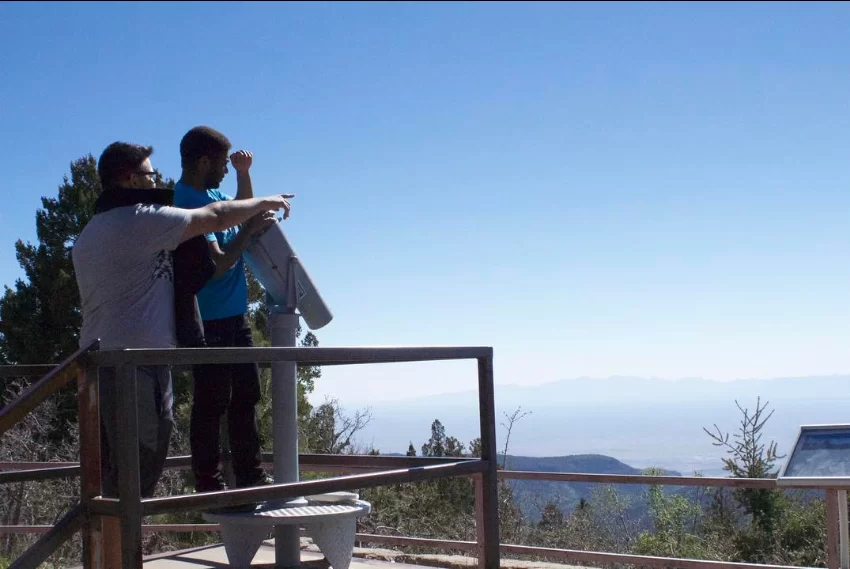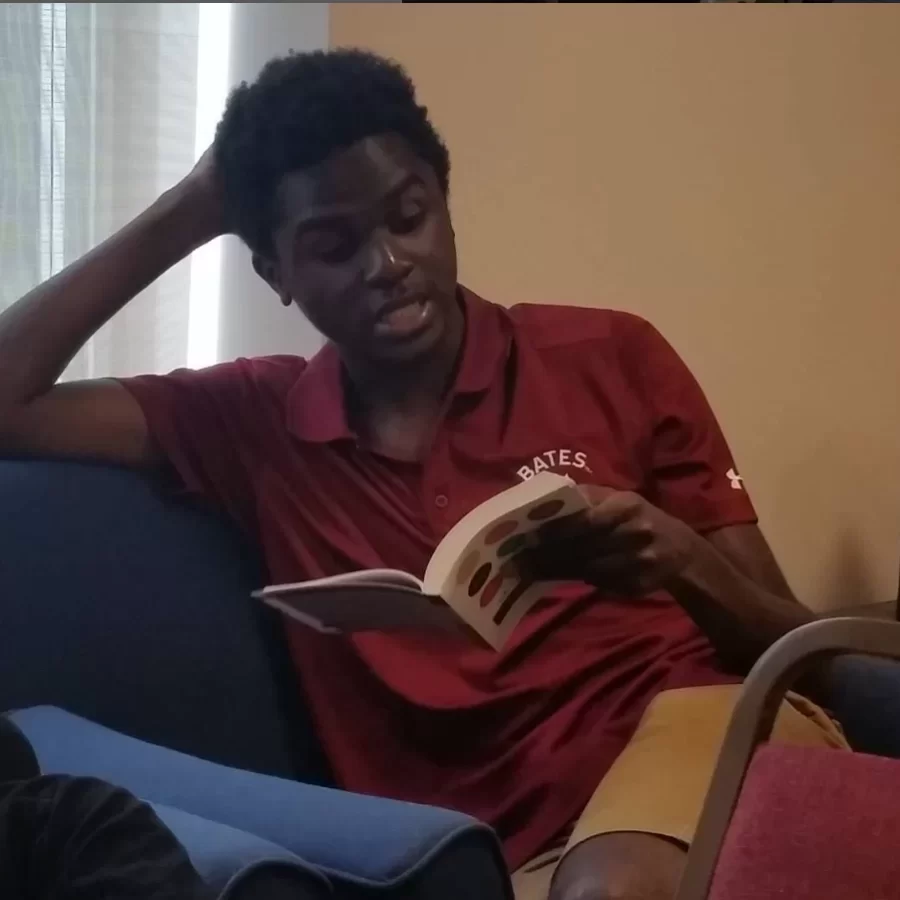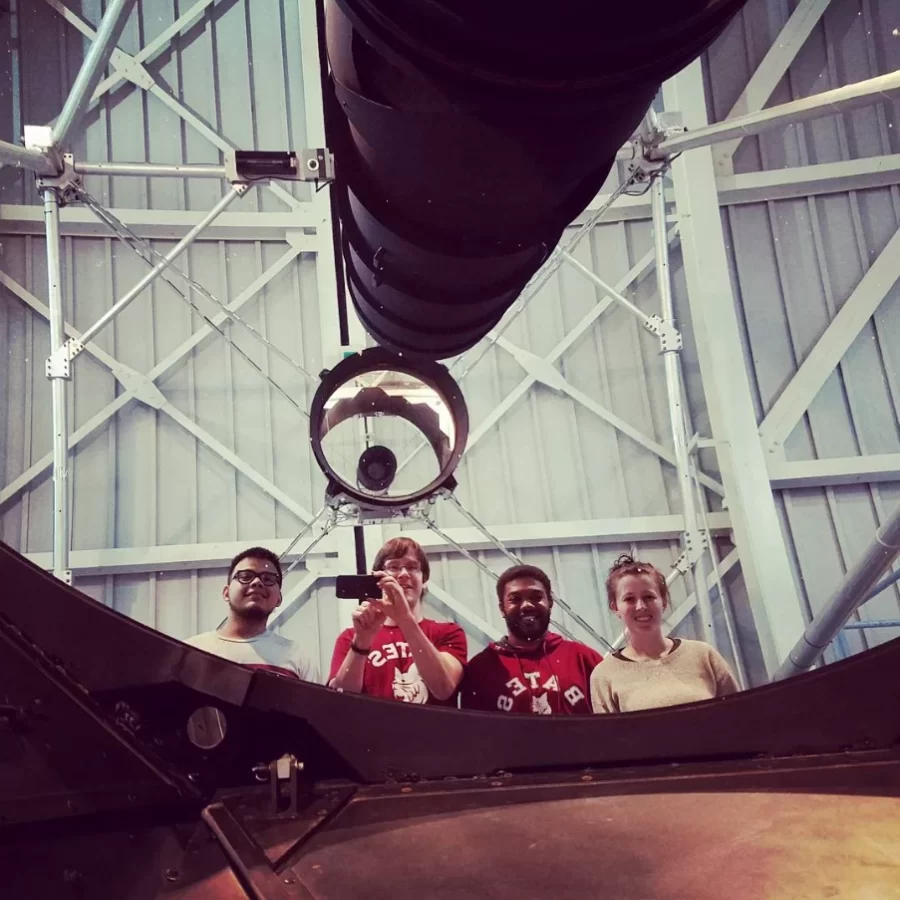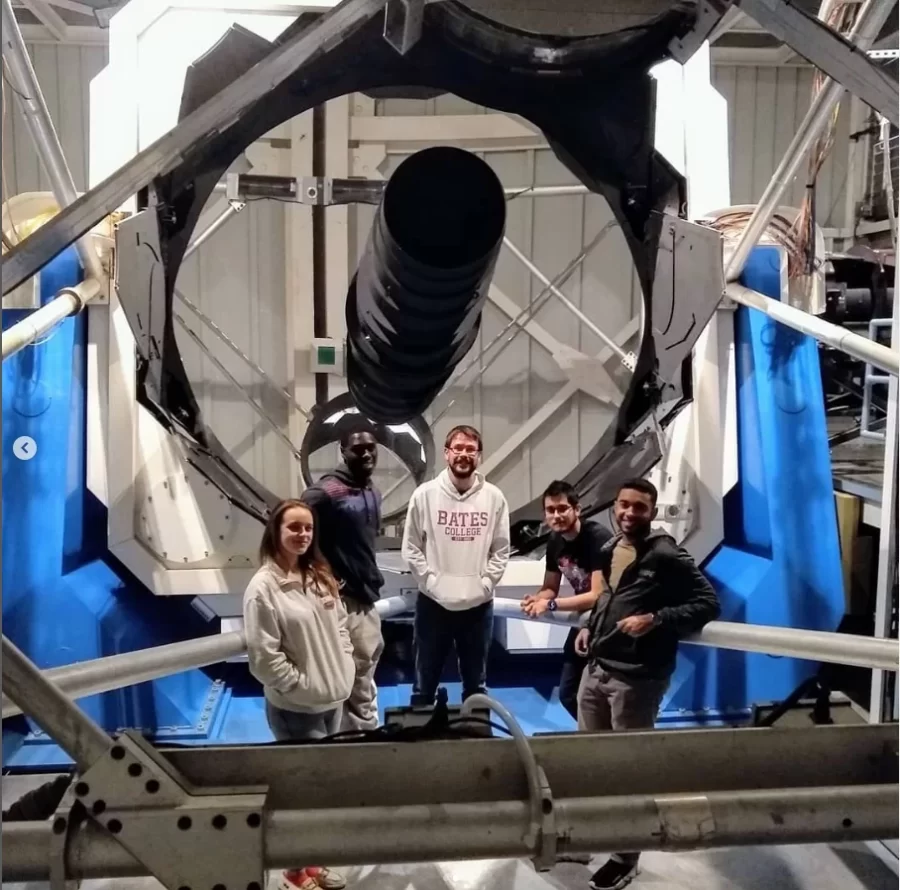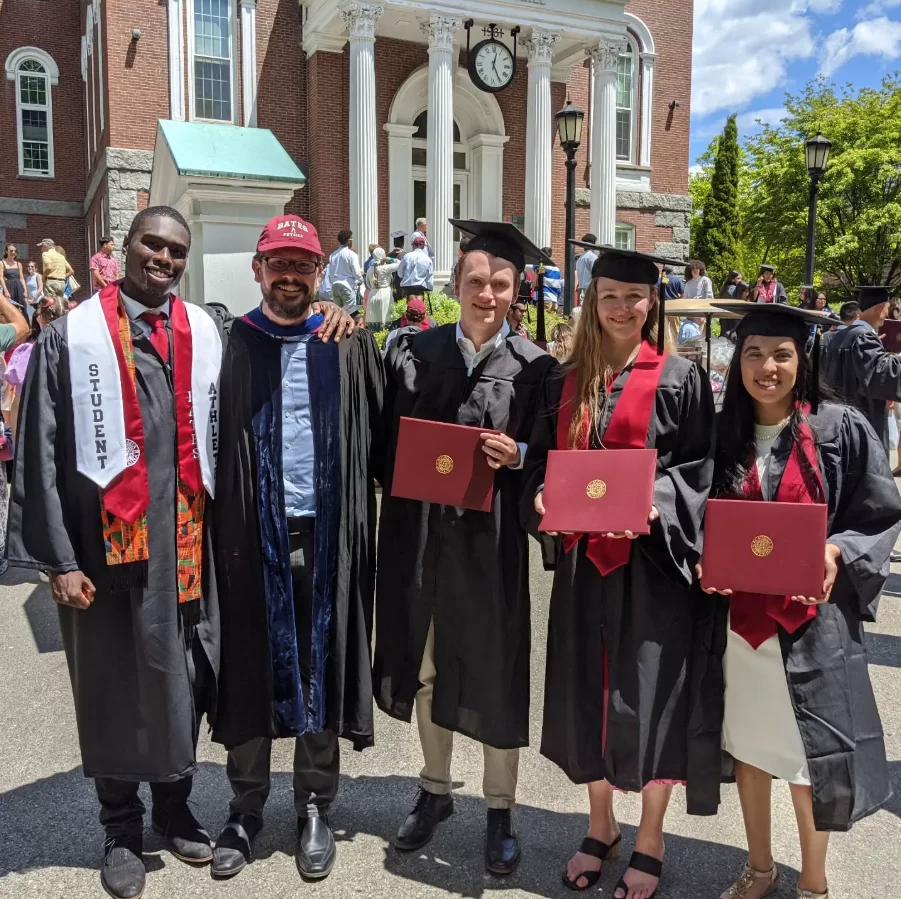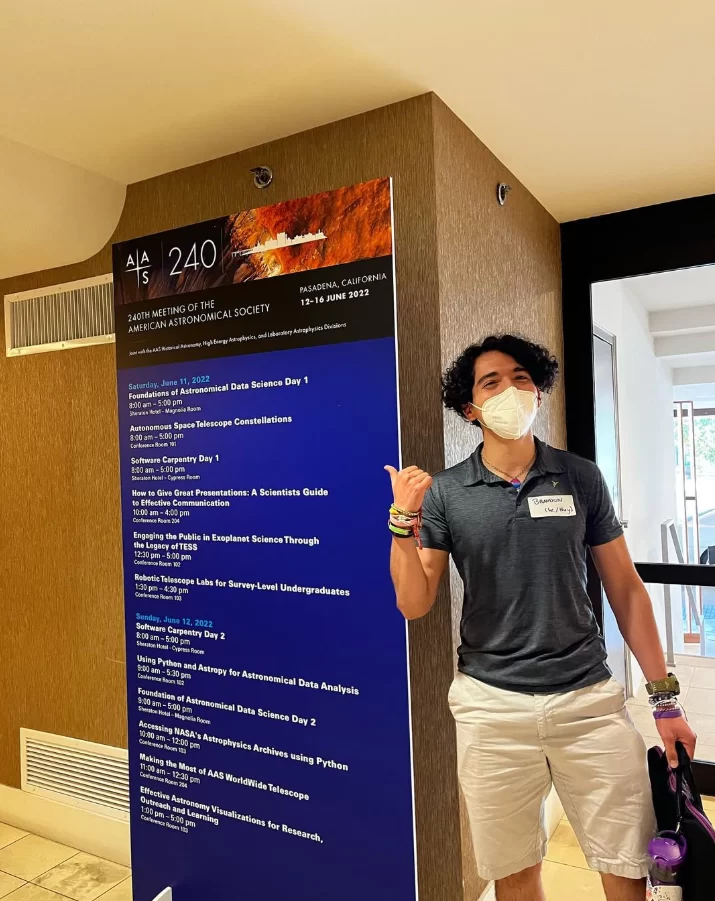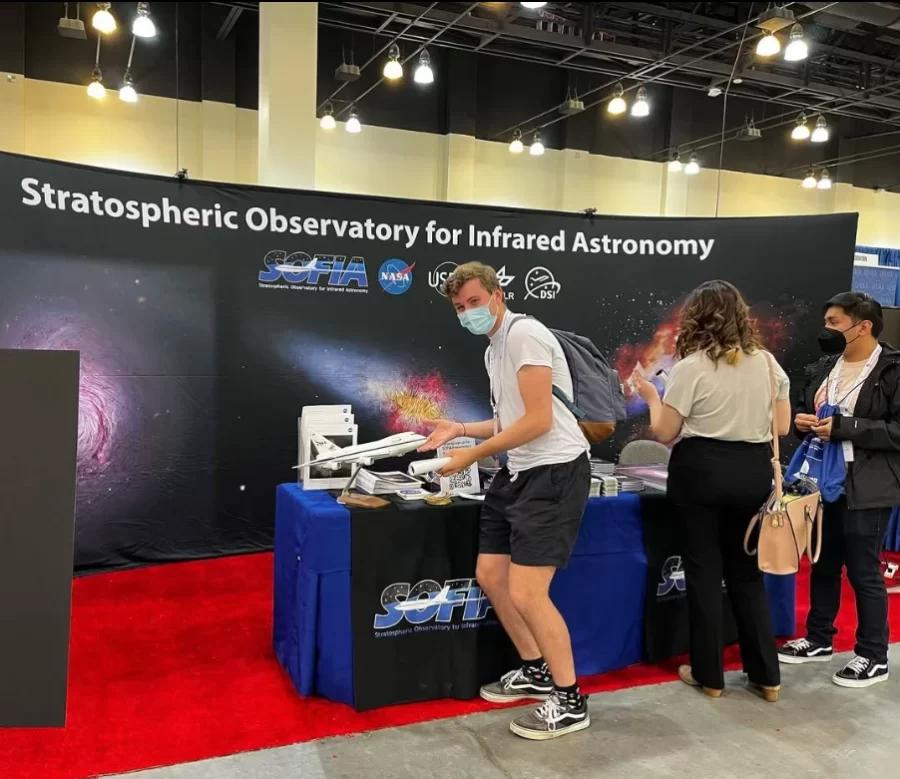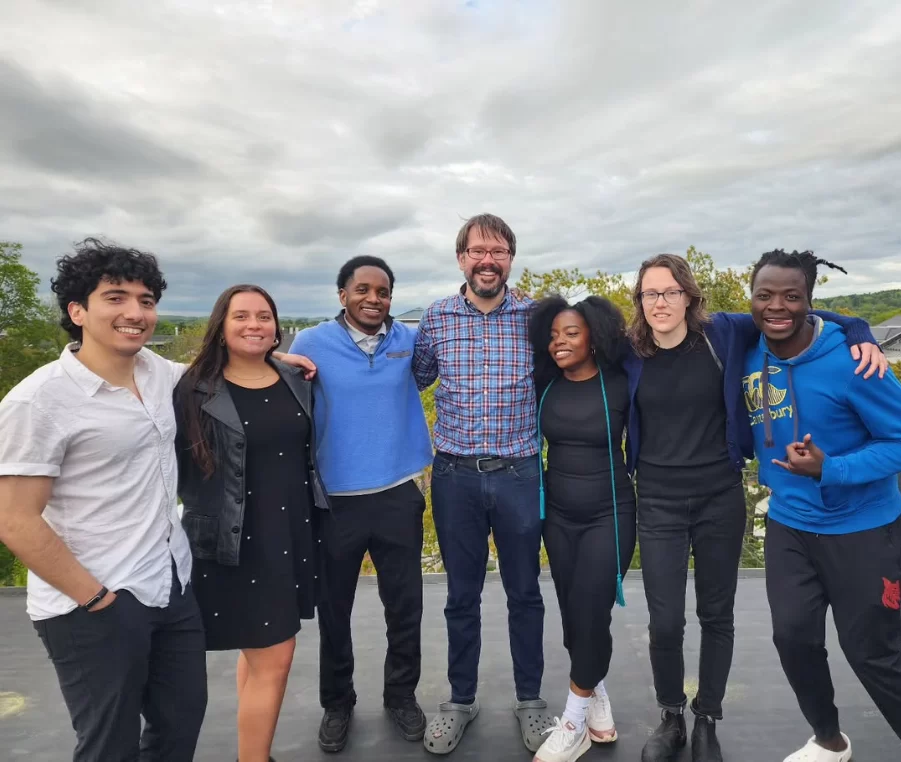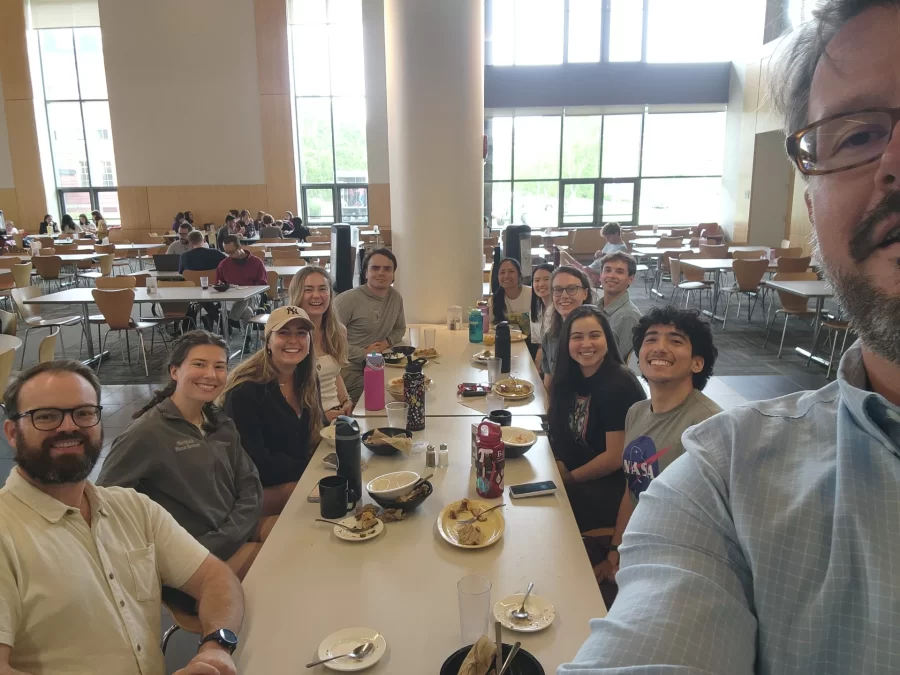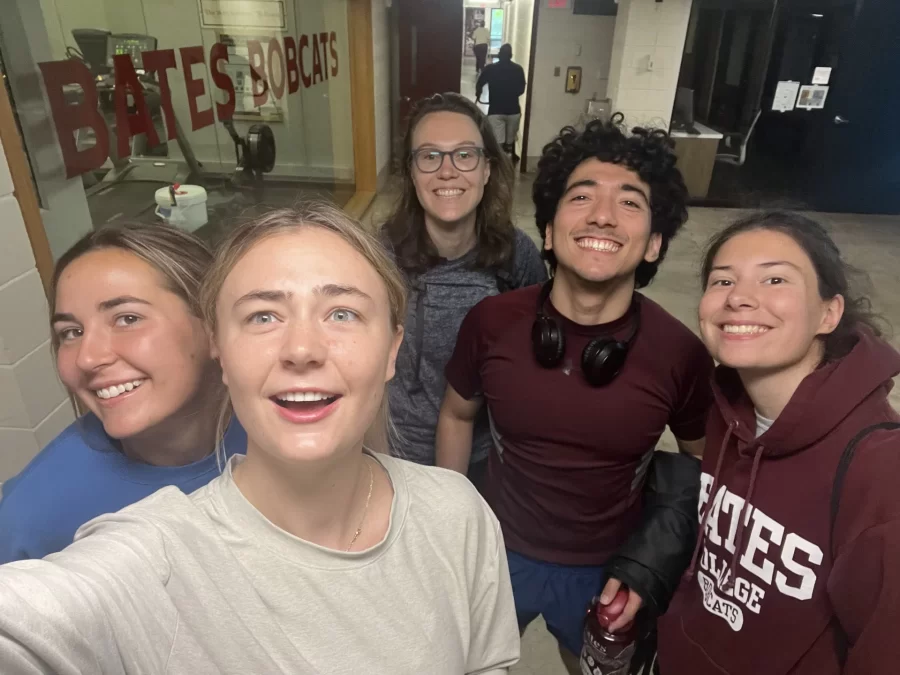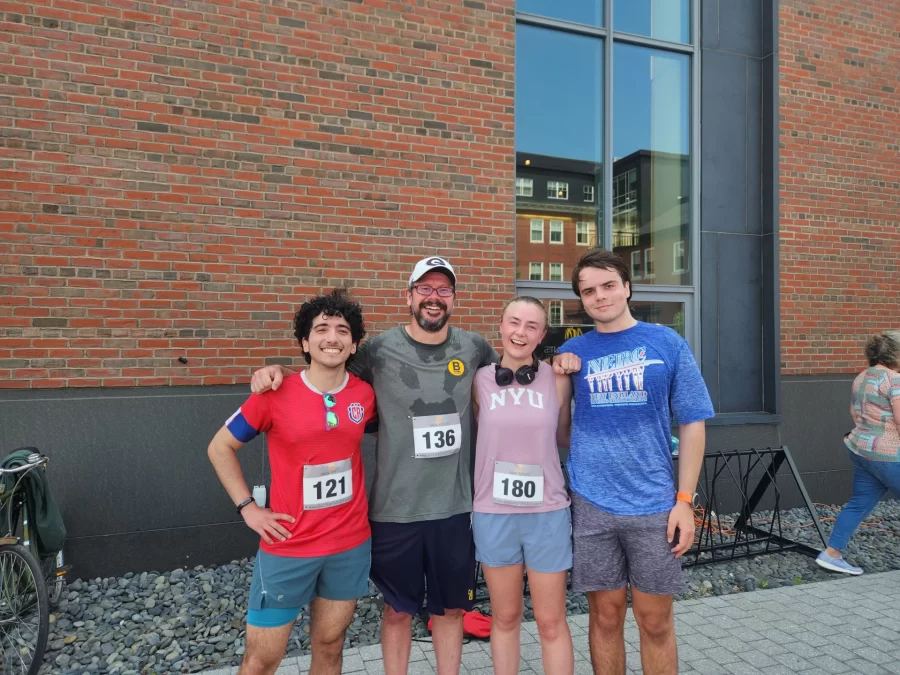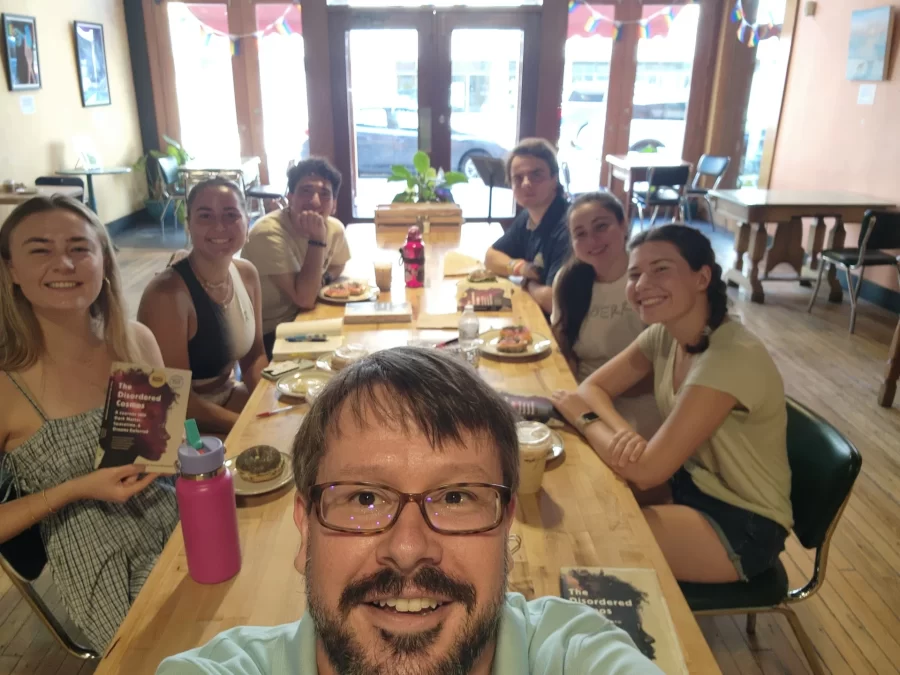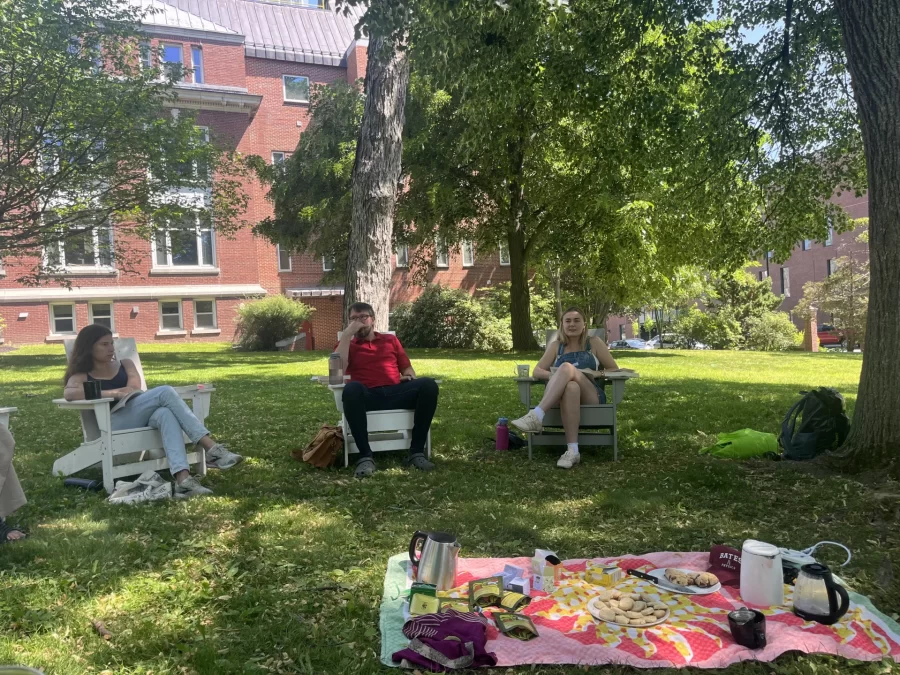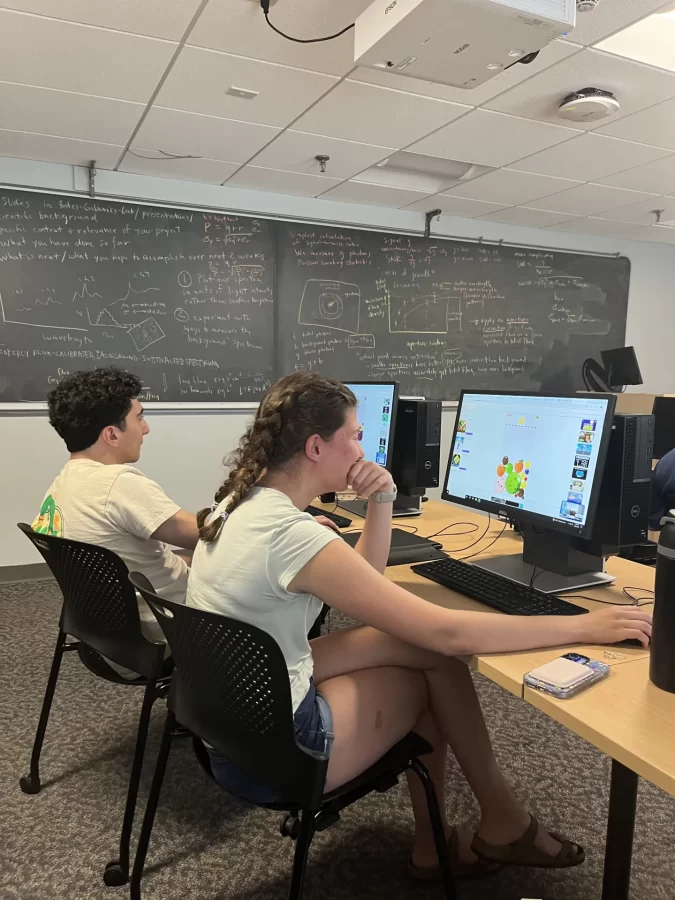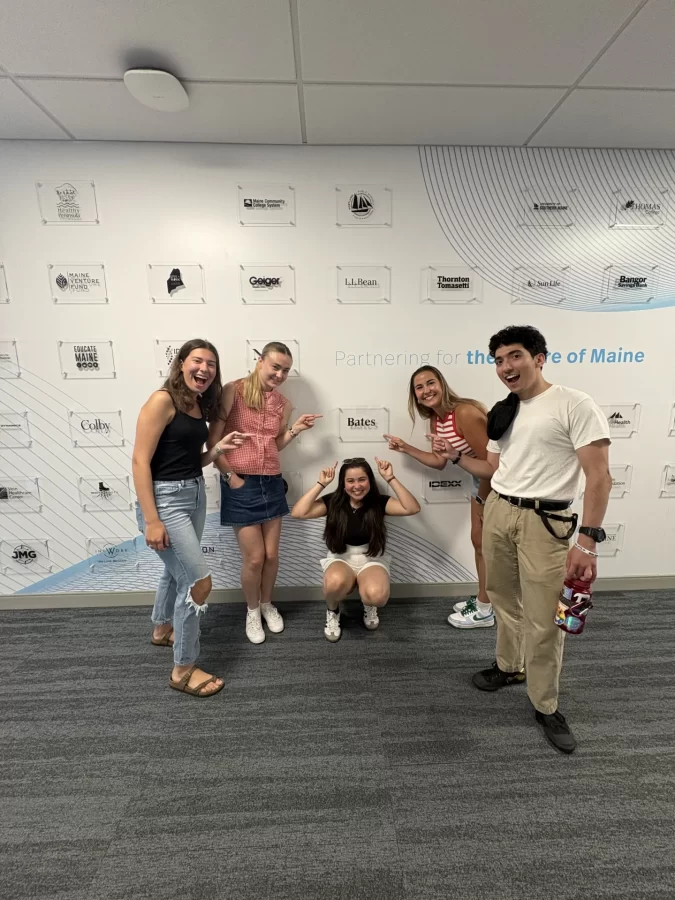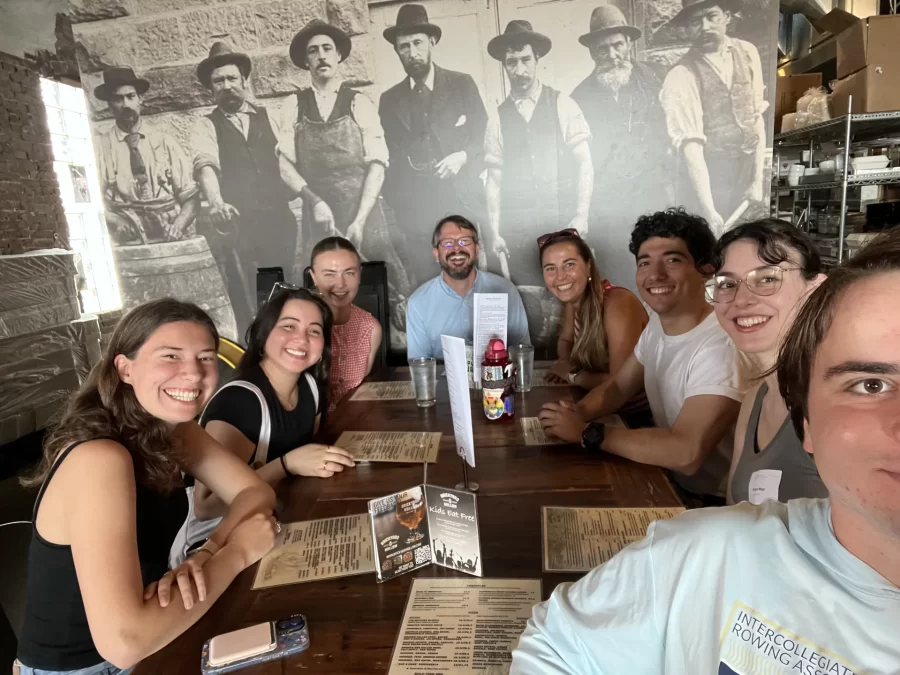The Bates Galaxies Lab
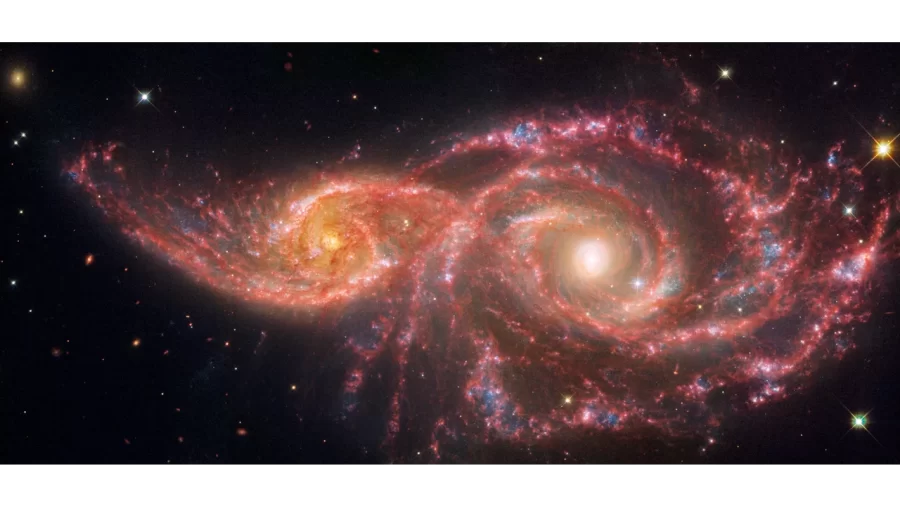
Two face-on spiral galaxies take up almost the entire view, both set against the black background of space. At first glance, their bright cores, and red and blue spiral arms make the galaxies look like a colorful masquerade mask that sits above the nose. The galaxy at left, IC 2163, is smaller than the galaxy at right, taking up a little over a quarter of the view. The galaxy at right, NGC 2207, takes up half the view, with edges of its spiral arms reaching the bottom, right, and top of the frame. The two galaxies overlap at the center of the frame, with the smaller IC 2163 behind the larger NGC 2207.
The Bates Astrophysics Galaxy Evolution Lab (or the “BAGEL”) uses large datasets from ground and space-based telescopes to study several different galaxies and their unique traits. With this data, astrophysicists can evaluate how gas penetrates various galaxies, forms stars, and fuels the growth of supermassive black holes. We can also evaluate and continue questioning how energy and momentum from massive stars and black holes expel gas out of these galaxies.
The BAGEL is established and run under Aleksandar M. Diamond-Stanic, Professor of Physics and Astronomy as well as Chair of the Department at Bates College. Aleksandar (Aleks) Diamond-Stanic received his BA in Physics from Carleton College and his PhD in Astronomy from the University of Arizona. He was a Center for Galaxy Evolution Fellow at the University of California, San Diego and a Grainger Postdoctoral Fellow at the University of Wisconsin-Madison before joining the Department of Physics and Astronomy at Bates College. His research focuses on the evolution of galaxies and the growth of supermassive black holes through cosmic time. He brings an enthusiasm for interactive teaching methods and student engagement in research, cultivating an environment that is welcoming, equitable, and supportive of growth and success.
Start by Looking Up

According to the one and only Albert Einstein, “The most incomprehensible thing about the universe is that it is comprehensible”. Well, at least as comprehensible as we are willing to work to understand it. And since the days of old Albert, we have come exceedingly far, further than I am sure he would have imagined. And yet, in comparison to the grand chaos of space and time, we know little to nothing!
At the BAGEL, students are mentored as they build their knowledge in astronomy and physics concepts, increase their coding capabilities using Python, read and analyze other scientists’ work, and make discoveries of their own. Throughout the year, our research raises questions surrounding our very existence and how the infinite universe around us works. Astrophysics is a quest for understanding everything, from the birth of galaxies to the death of stars, and how all of it fits together. It helps develop skills in programming, big picture problem-solving, teamwork, mathematical modeling, data analysis, communication, and the critical evaluation of previous scientific work. Here, philosophy meets physics… and our lab is the entire cosmos.
Stay Updated!
Our 2025 Summer Researchers for both Team JWST and Team eBOSS will be presenting their work during Back to Bates Weekend at the Summer Research Poster Session, held on October 3rd, 2025. They will be joined by over 40 of their fellow students who received Bates grants and fellowships, all presenting their discoveries!
Bates Galaxies Lab has an Instagram account, where you can keep track of our latest and greatest activities and revelations! Follow our work here!
Active Projects
Team JWST Research

A significant field of study for astrophysicists is the formation of massive galaxies, which is driven by powerful, compact starbursts with energetic feedback. These compact starbursts are galaxies that are small in size, but have intense star formation and often high redshift values. Redshift values are found through evaluating the light of distant objects that appears shifted towards the red end of the spectrum; thus, the object is moving away from the observer. Massive galaxies form at a high redshift of about z > 3, but recent discoveries find a low redshift of about z < 0.5 in massive compact starbursts with powerful ionized and molecular outflows. These outflows regulate star formation (SF).
As part of the JWST Research Project, astrophysicists are analysing five representative compact starburst galaxies, exhibited in Figure 1 as J1107, J1219, J1506, J1613, and J2118. These galaxies are extremely unique, with velocities up to 3000 km/s and radii of up to 50 kpc. A range of optical, mid-IR, molecular, and radio observations can help illustrate the morphologies and energy of their outflows.

Among the many queries our lab team explores, we look into our JWST data and wonder: Is the powerful feedback driven by star formation or a hidden Active Galactic Nuclei (AGNs)?
So, how do we begin to tackle these questions? We can start by looking at spectral features of our galaxies that can trace recent SF activities, such as PAH features (which stands for Polycyclic Aromatic Hydrocarbons, AKA little molecules made of fused aromatic rings made of carbon and hydrogen that are excited by UV radiation from young, massive stars), [NeII] emissions (which traces photoionized gas in the mid-infrared, is strong in H II regions ionized by young massive stars, and therefore useful for studying SF regions or dusty starburst galaxies), and MIRI spectral properties (mid-infrared spectroscopy enabling detailed studies of dust, gas, molecules, and stars). Thus, we can study the outflows and their connections to the Circumgalactic Medium (or CGM: the vast halo of gas that surrounds a galaxy’s dark matter halo, which is a major source of SF), as these outflows contain the energy needed for SF. These outflows are driven by stellar winds, supernova explosions, galactic mergers, AGNs, and cosmic rays. Overall, galactic outflows and negative feedback can be caused by the SF process or AGN activity, and therefore can be analysed to further understand our galaxies.
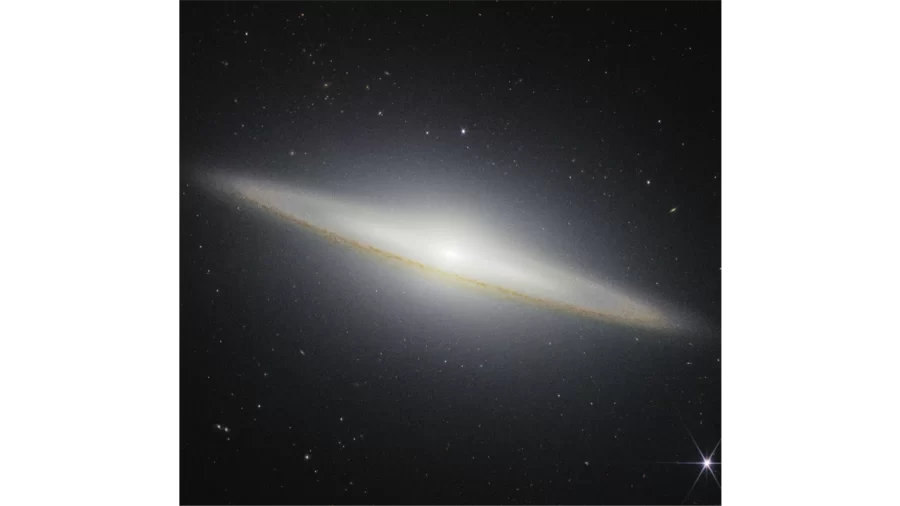
Team eBOSS Research
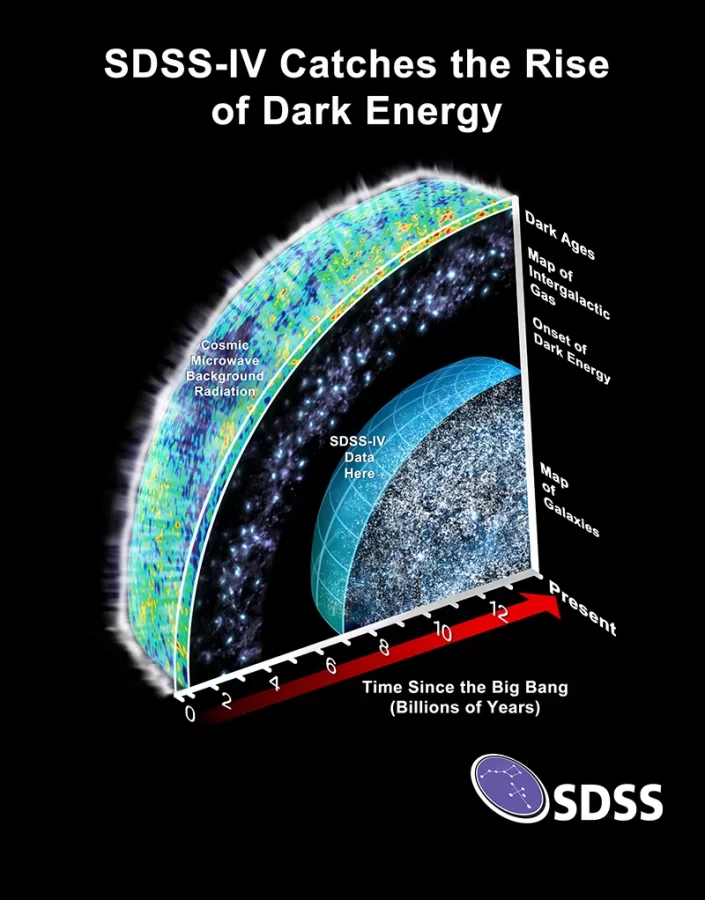
The Extended Baryon Oscillation Spectroscopic Survey (eBOSS) collected point-source optical spectroscopy from ~1.9 million galaxies and more than 600,000 quasars. The eBOSS team at Bates uses these spectra to measure the outflow velocities of groups of galaxies by stacking their spectra (to increase the signal-to-noise ratio) and looking at the Doppler broadening of gas absorption lines. These velocities are used to investigate correlations between the velocity of outflows and physical parameters, such as the mass or star-formation rate of galaxies, to uncover what drives gas outflows in star-forming galaxies.

Previous Work
Over the years, our students and researchers have collaborated to work on different projects. Whether it’s for a senior thesis project or summer research, the BAGEL has stimulated academic growth and curious minds since 2016. By evaluating our past discoveries, we can begin to question what we know and work to uncover the breakthroughs of the future.
Presenting Research Over the Years
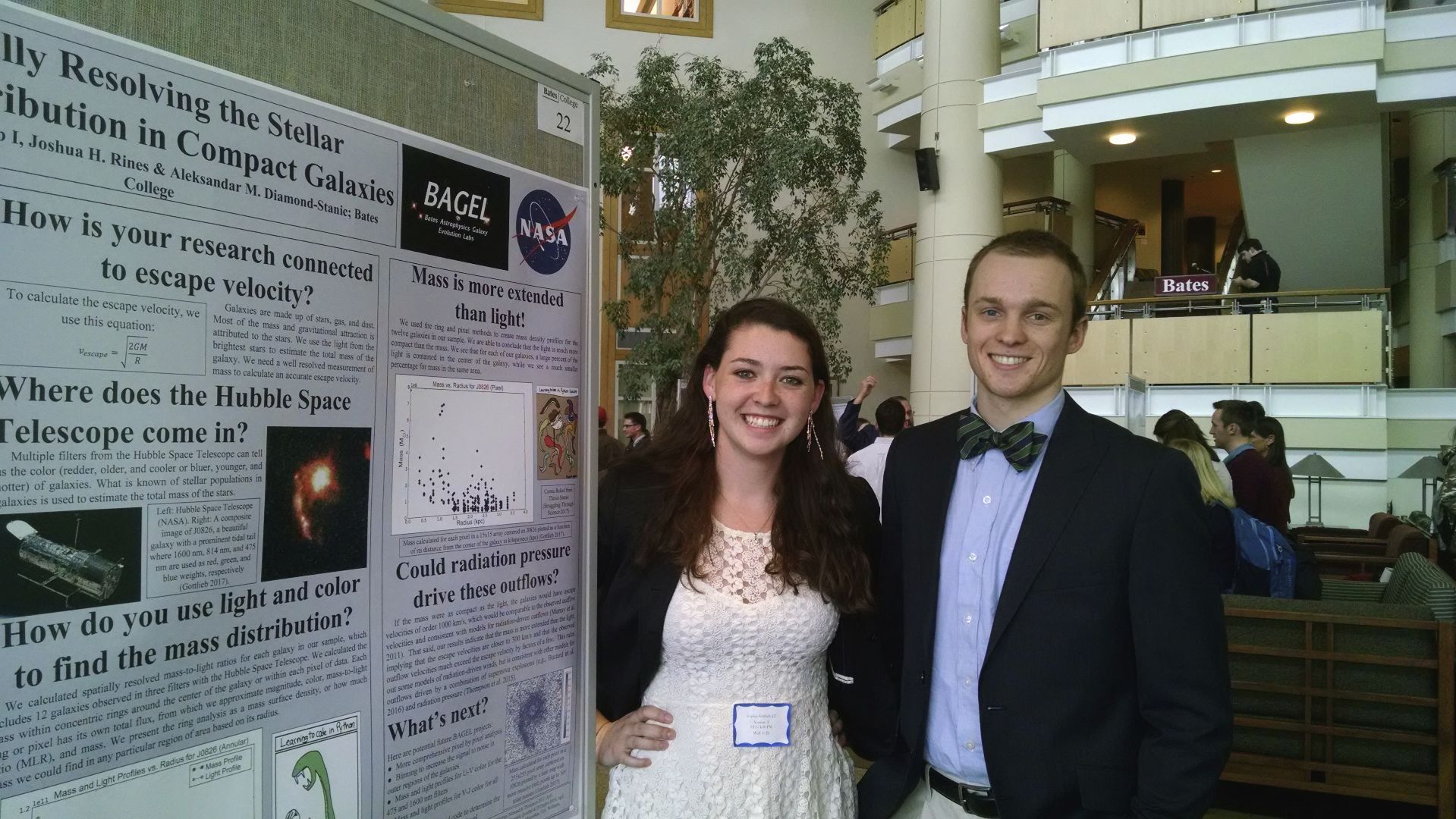
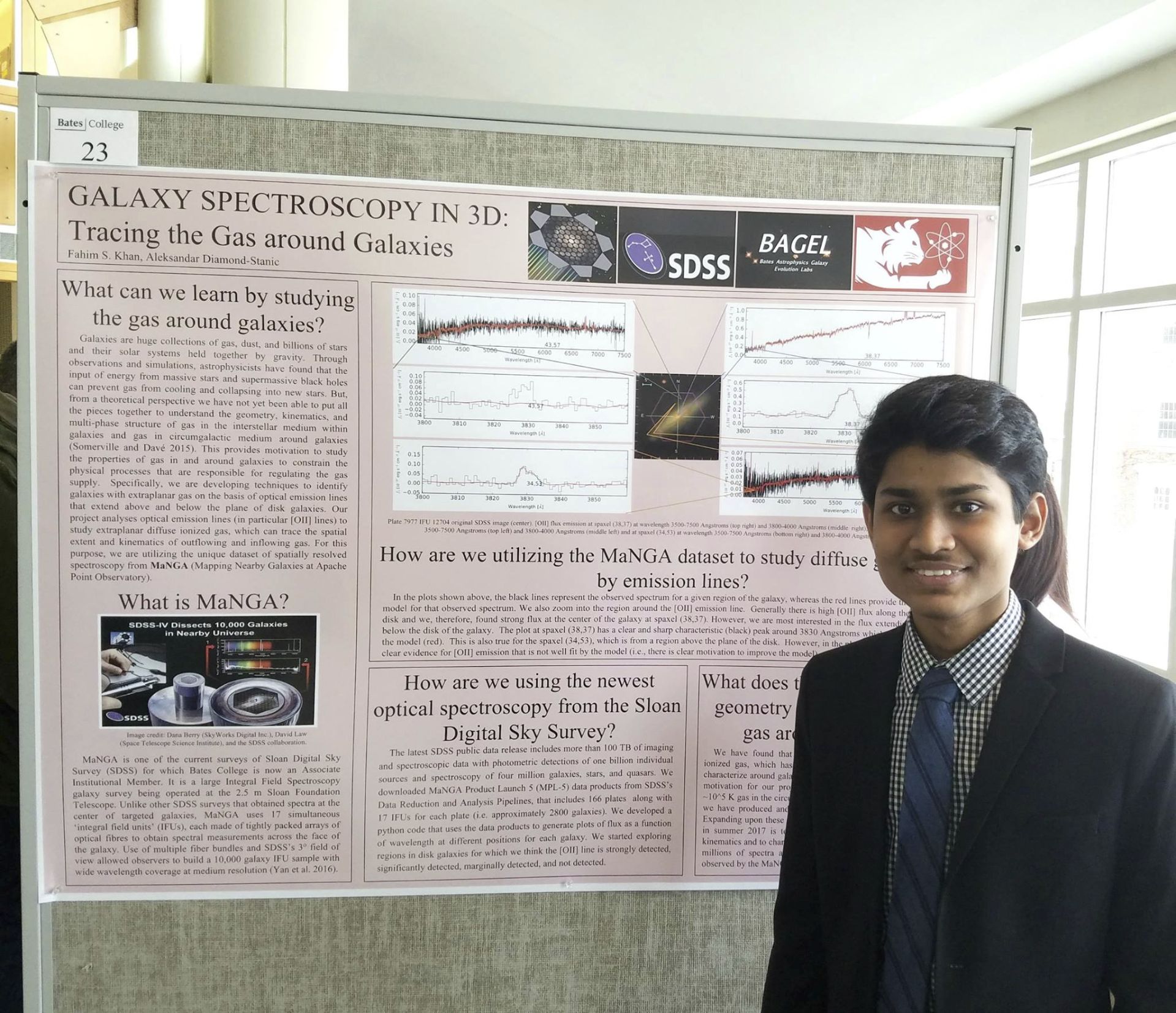

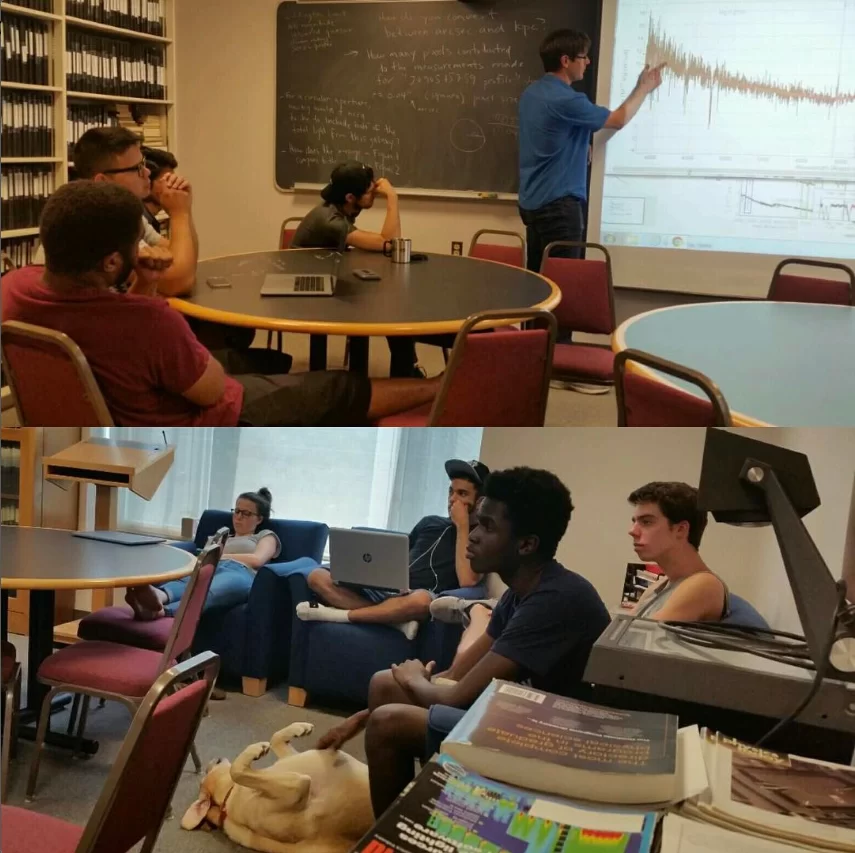
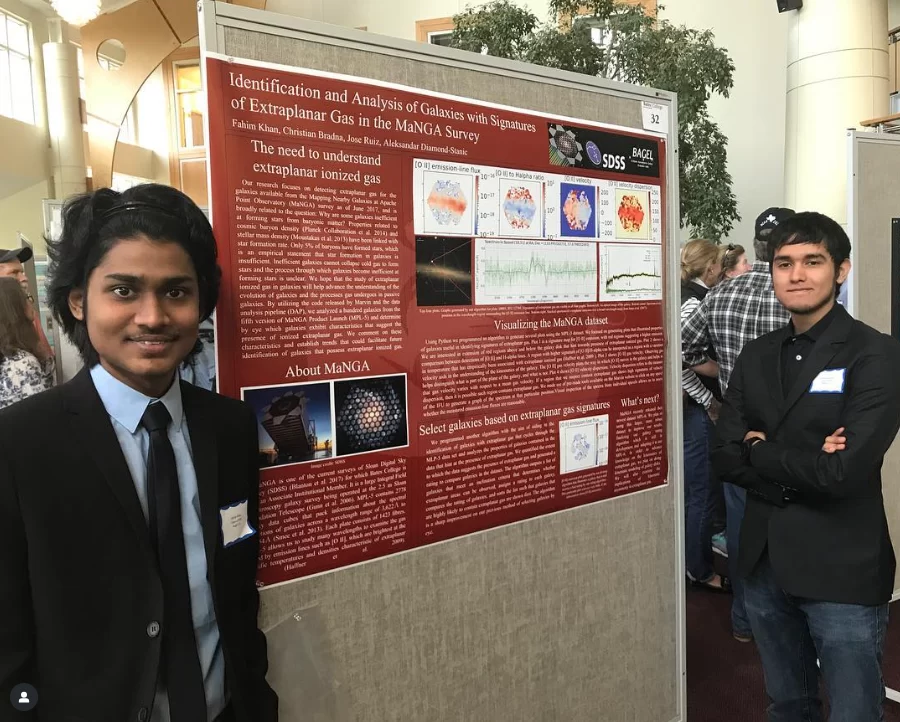
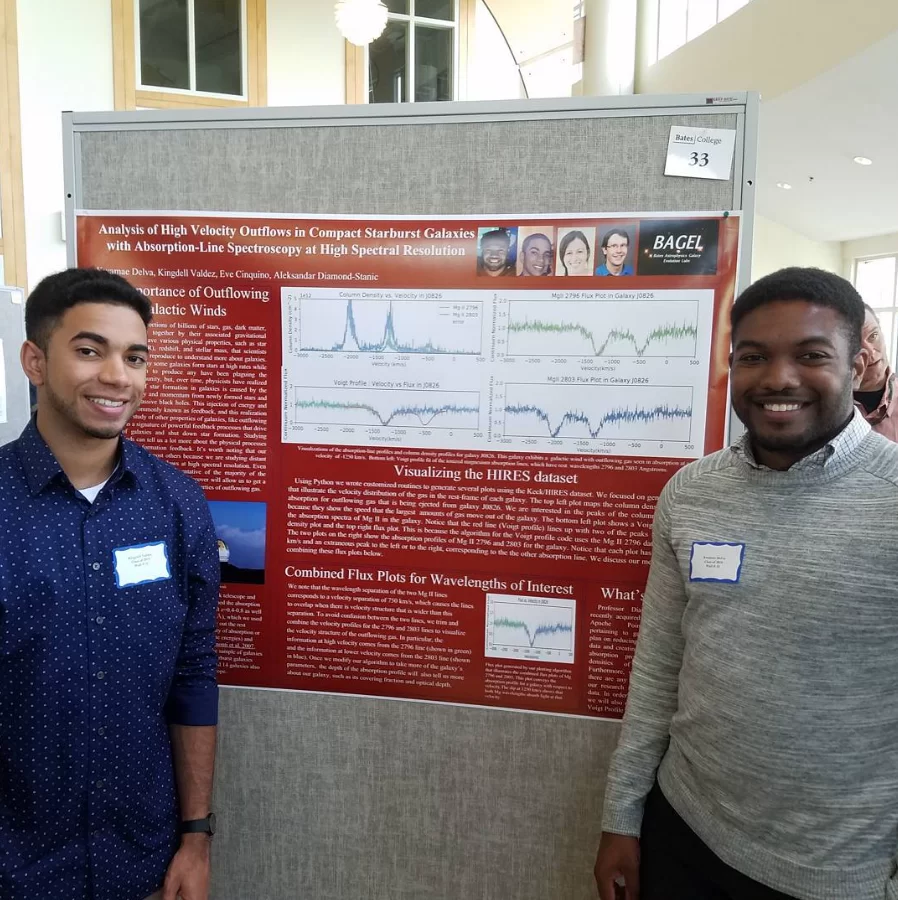
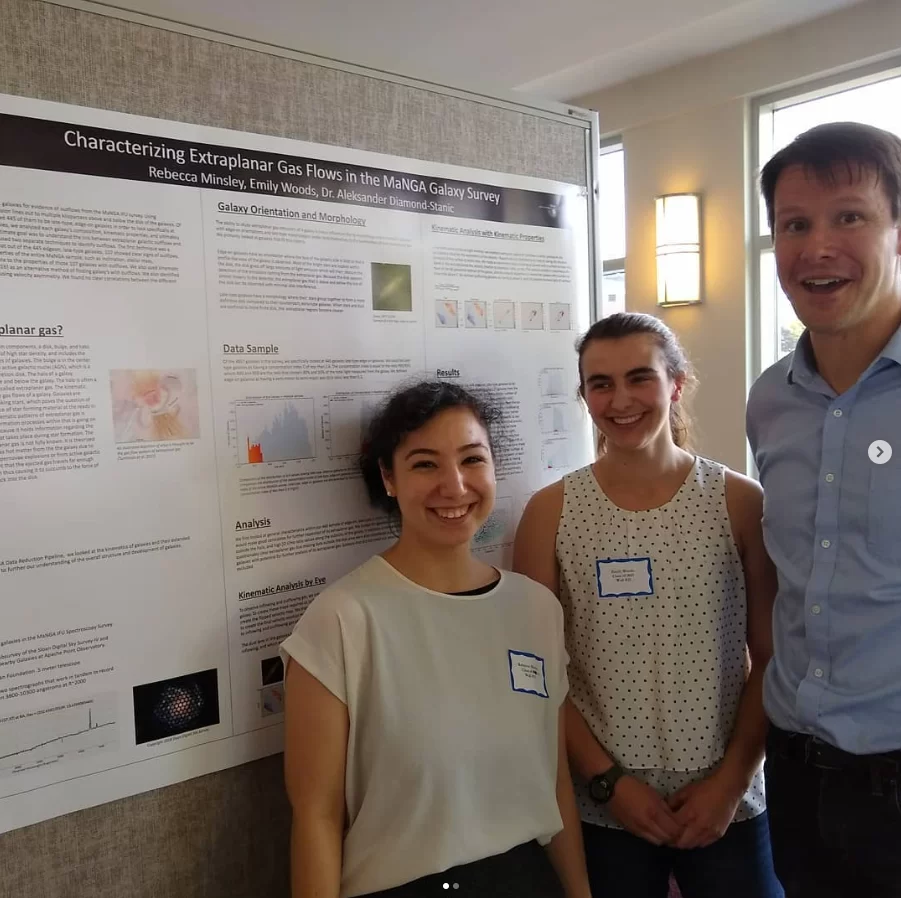
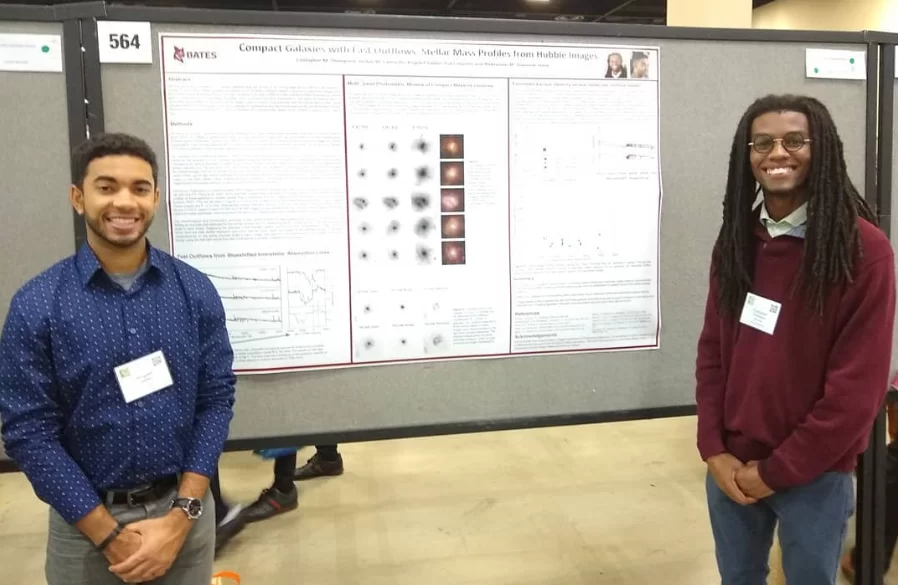
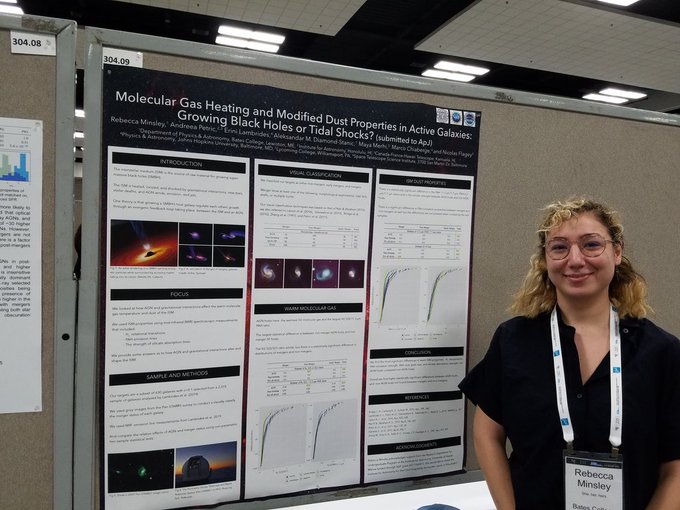
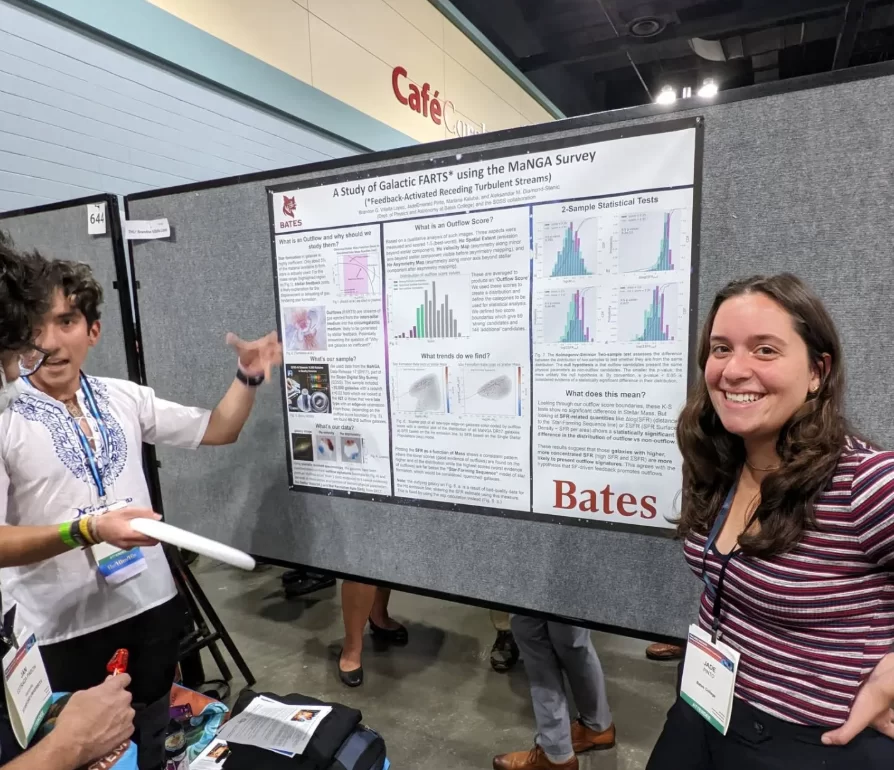
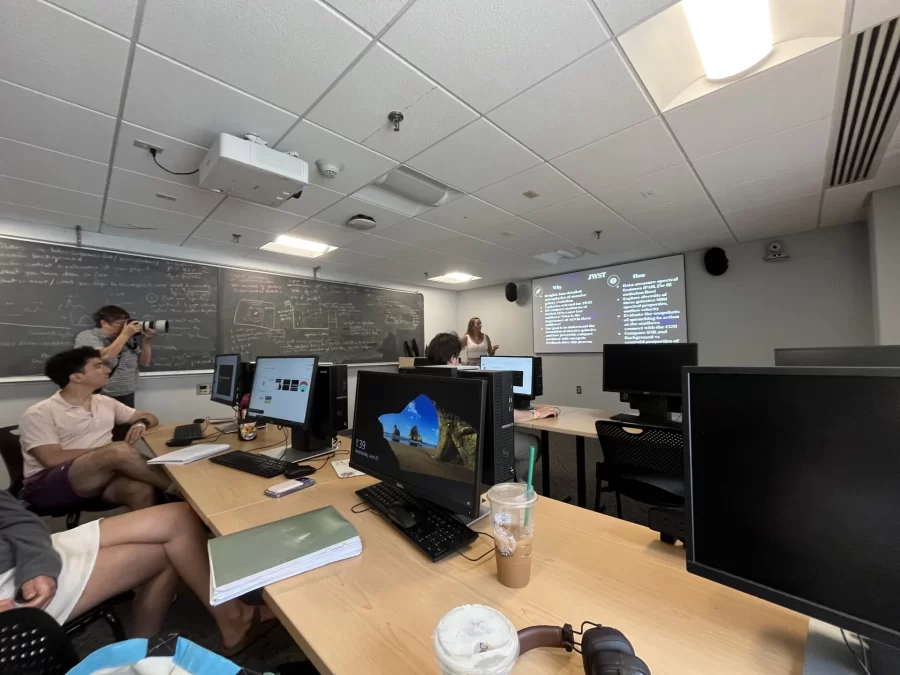
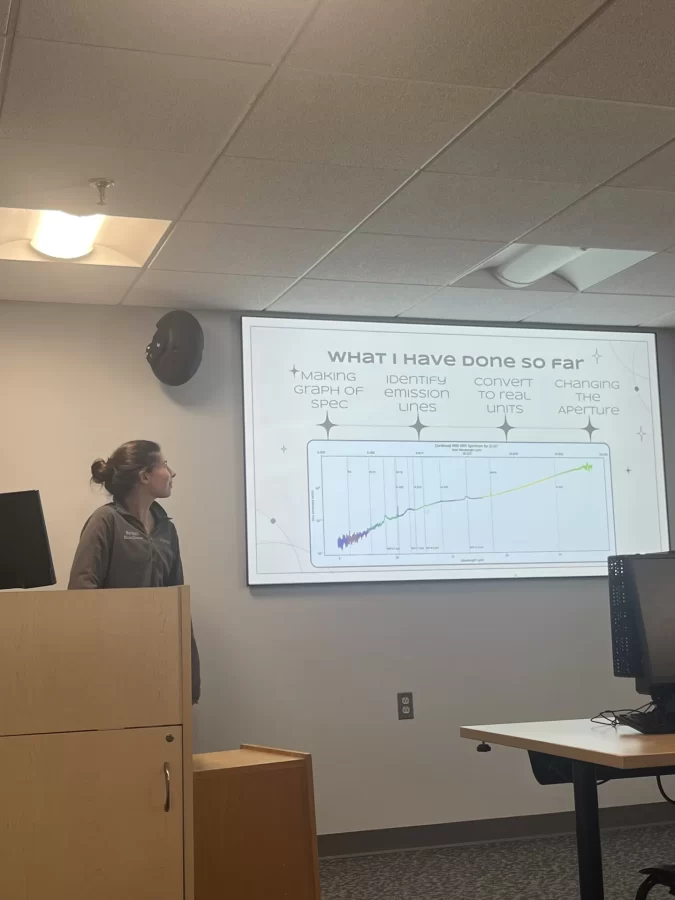
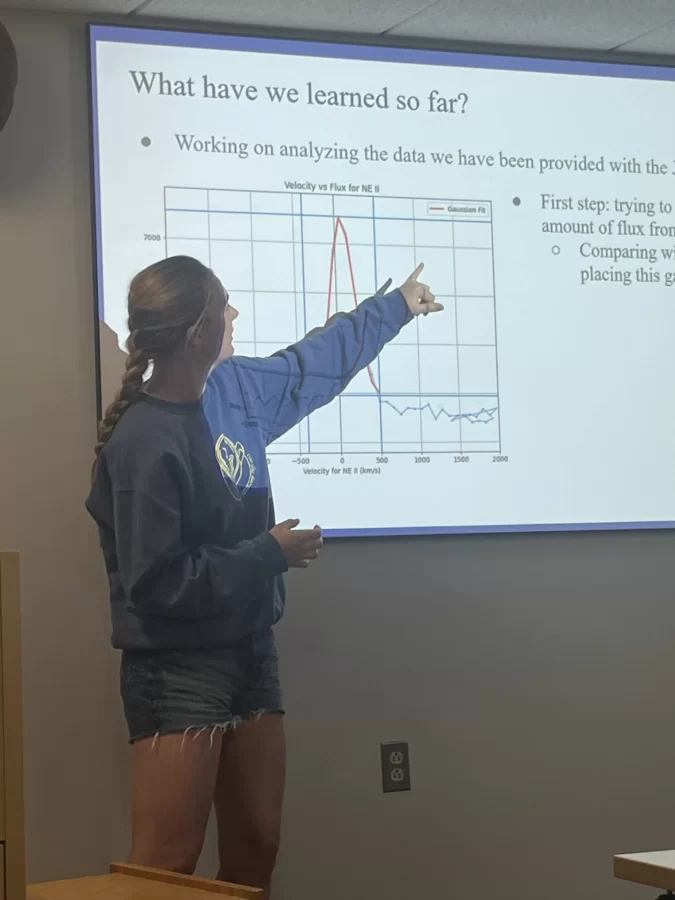
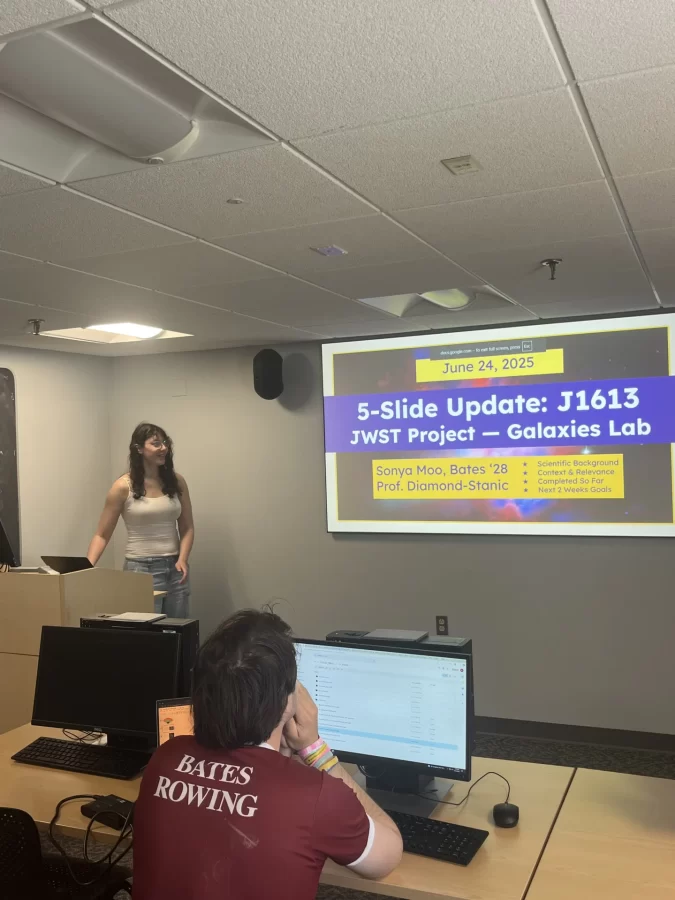
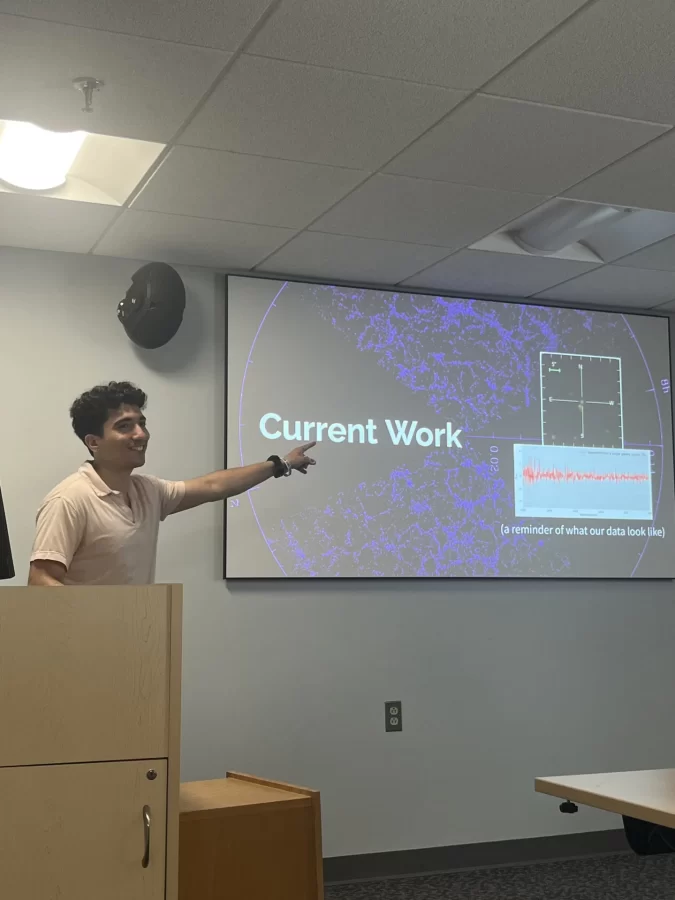
Creating a Community
Bates Galaxies Lab has brought together various individuals of different interests, class years, and backgrounds through a shared love of exploration and learning. Every presentation, project, and research trip brings each student closer to understanding where their own curiosity lies. This exciting journey is one we take as a team each year. Our interest in the galaxies around our own Milky Way, as well as the science that supports our current understanding of the universe, is what brings us together to create an environment stimulating growth, inquisitiveness, and a quest for knowledge.
Team Building
